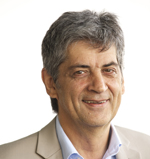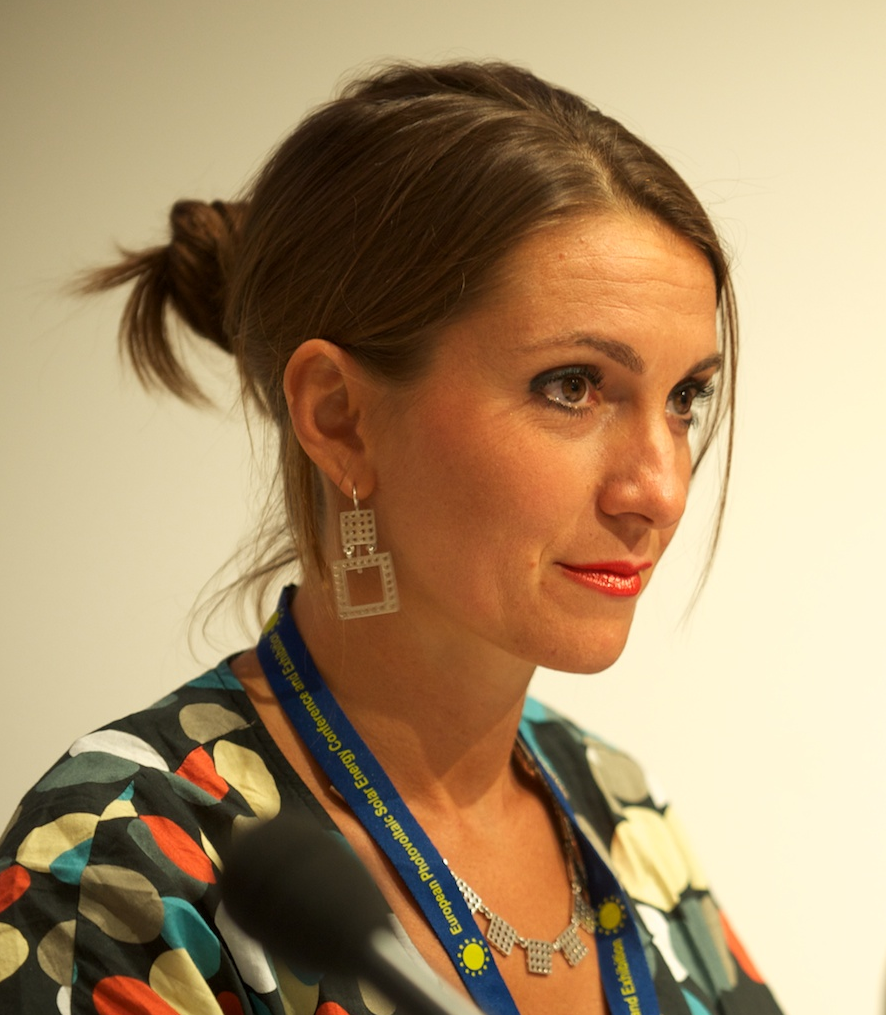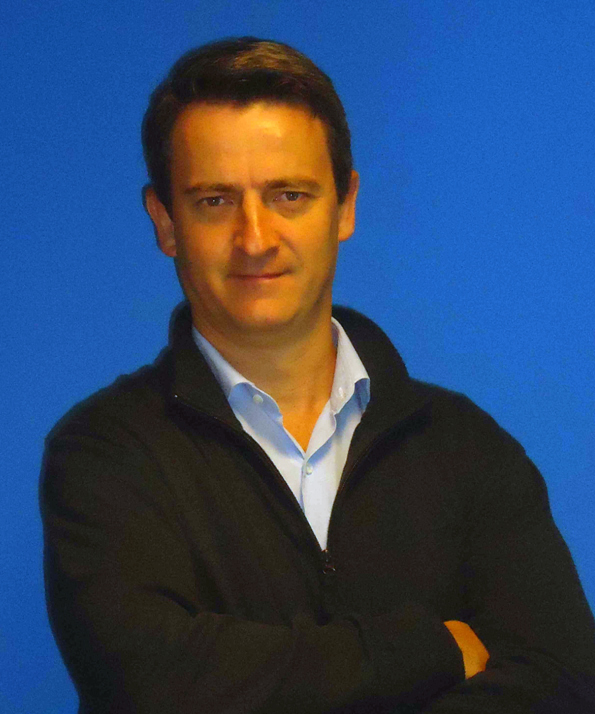Programme
08.30-08.40
Heinz Ossenbrink
European Commission, JRC Joint Research Center | Institute for Energy and Transport | Renewable Energy Unit | Ispra | Italy
Alessandra Scognamiglio
ENEA-UTTP FOTO | Italian National Agency for New Technologies Energy and Sustainable Economic Development – Photovoltaic Technologies Lab | Portici | Italy
INTRODUCTION
08.40-09.00
Patrick Heinstein
EPFL | Ecole Polytechnique Fédérale de Lausanne | Institute of Microengineering | Photovoltaics Lab | Neuchâtel | Switzerland
NEW APPROACHES FOR DEVELOPING LOW COST PHOTOVOLTAIC MODULES FOR BUILDINGS
09.00-09.20
Philippe Malbranche
CEA-INES RDI | Commissariat à l’énergie atomique er aux énergies alternatives | Institut National de l’energie solaire | Recherche Developpement Innovation Industrielle | Le Bourget du Lac | France
TECHNOLOGIES AND PRODUCTS FOR LANDSCAPE INTEGRATION
09.20-09.40
Andreas Semmel
Ertex Solar GmbH | Amstetten | Austria
DESIGNING PHOTOVOLTAICS FOR LANDSCAPES
09.40-10.00
Laurent Quittre
ISSOL | Dison | Liège | Belgium
THE FRENCH MINISTER OF DEFENCE: PHOTOVOLTAICS MEETS THE ZINC ROOFS OF PARIS
10.00-10.30
COFFEE BREAK
10.30-10.50
Rolf Hagen
Context AS | Oslo | Norway
DESIGN, PHOTOVOLTAICS AND BUILDINGS: CONCEPT TO REALITY: THE ROLE OF COMMUNICATION
10.50-11.10
Salvator John Liotta
CNRS-LAVUE | Centre National de la Recherche Scientifique | Laboratoire Architecture Ville Urbanisme Environment | Paris | France
University of Tokyo | Kengo Kuma Lab | Tokyo | Japan
PATTERNS AND LAYERING: POWER OF NATURE, ENERGY IN ARCHITECTURE
11.10-11.30
Walter Hood
Hood Studio | Oakland | California | USA
UC Berkeley | College of Environmental Design | Berkeley | California | USA
“OBJECTS IN THE LANDSCAPE”: THE SCULPTURAL FIELD AND PHOTOVOLTAICS
11.30-11.50
Eric Scotto
Akuo Energy | Paris | France
NEW PERFORMATIVE LANDSCAPES: PHOTOVOLTAICS ON FARMLANDS
11.50-12.10
Stefan Tischer
ENSP | Ecole Nationale Supérieure du Paysage | Versailles-Marseille | France
NON FOSSIL FUTURE LANDSCAPES: EXPERIENCES
12.10-12.30
ROUND TABLE
Speakers
Heinz OSSENBRINK

European Commission, JRC Joint Research Center | Institute for Energy and Transport | Renewable Energy Unit | Ispra | Italy
Dr. Heinz Ossenbrink, born in 1951, has a PhD in Nuclear Physics from Hahn Meitner Institute, Berlin and joined the European Commission’s Joint Research Centre in 1982. He built up the JRC’s activity on Photovoltaics when Europe started its research and pilot programme for Photovoltaic systems. In 1995 he became Head of the Unit for Renewable Energy, and expanded research and support activities to Energy Efficiency and Bio-Energy, notably Biofuels. His work is dedicated to the scientific support of EU legislation for Renewable Energies and Energy Efficiency. More recently, he is developing the unit’s portfolio to support Africa’s efforts for a renewable energy supply.
Since 1982 he is contributing to the standards work of the IEC TC82, Solar Photovoltaic Systems, in particular regarding calibration of reference cells and lifetime testing of PV modules. His many publications cover measurement and testing methods for photovoltaic generators, economic assessment of renewable energy and global environmental impacts of extended bio-fuel use.
From 1995 he has been serving as Programme Chair of the prestigious series of European Photovoltaic Solar Energy Conferences and in 2005 he commenced and still continues his term assisting the Programme Chair of the prestigious series of European Biomass Conferences.
He lives on the shores of Lake Maggiore in northern Italy where he practices sailing and skiing, and is deeply interested in global sustainability issues.
Alessandra SCOGNAMIGLIO

ENEA-UTTP FOTO | Italian National Agency for New Technologies Energy and Sustainable Economic Development – Photovoltaic Technologies Lab | Portici | Italy
Architect, PhD in Technologies for Architecture and Environment. Since 2000 she works as researcher at ENEA (Italian National Agency for New Technologies, Energy and Sustainable Economic Development), Photovoltaic Technologies Area (www.enea.it). Her main interest is working on the hybrid border between scientific research and design, to create a domain of common understanding and possibilities for experimentations in the real living environment.
Her main fields of activity are: Building Integrated Photovoltaics (BIPV), Landscape Integrated Photovoltaics (LIPV), Net Zero Energy Buildings and Smart Cities.
She writes papers, she collaborates with the architectural magazine Domus, she patented innovative photovoltaic components for buildings and the urban environment, she edited books, and she participates and organize several scientific events and conferences. After having worked at the architectural scale, since 2007 she investigates the topic Energy-Landscapes, with a special focus on Photovoltaics and agricultural greenhouses.
She is a teacher at the Italian National Institute of Architecture for a post graduate master “Designer of sustainable architectures”. She is involved in European Project aiming at the development of special photovoltaic components for buildings. She is also involved in several IEA (International Energy Agency) research groups. In particular: 2008-2012 IEA SHC Task 41 “Solar Energy and Architecture”; 2008-2013 IEA SHC-EBC, Task 40-Annex 52 “Towards Net Zero Energy Solar Buildings”, 2013-2017 IEA SHC Task 51 “Solar Energy in Urban Planning”.
Patrick HEINSTEIN

EPFL | Ecole Polytechnique Fédérale de Lausanne | Institute of Microengineering | Photovoltaics Lab | Neuchâtel | Switzerland
Patrick Heinstein is the head of BIPV Design at the Institute of Microengineering (IMT, PV-Lab) in Neuchâtel (Switzerland) which belongs to the renowned Ecole Polytechnique Fédérale de Lausanne (EPFL). He obtained a degree as an Industrial Designer at the University of Applied Sciences in Darmstadt and studied History of Arts, Philosophy and Archaeology at Heidelberg and Bochum Universities. In over 20 years he has gained expertise in the international design business and is the author of numerous publications on the history and culture of visual perception and aesthetics. His PhD Thesis at the Bauhaus University in Weimar is about aspects of the distribution of knowledge at the beginning of industrialization. His profound practical and theoretical background allows him to play an important role as a frequently consulted expert at the sensitive interface between R&D activities, architects and the building industry, where issues of how to successfully bring the latest PV developments ‘from lab to fab’ are crucial. A special focus of his work is laid on photovoltaics and urban heritage conservation.
Philippe MALBRANCHE

CEA-INES RDI | Commissariat à l’énergie atomique er aux énergies alternatives | Institut National de l’energie solaire | Recherche Developpement Innovation Industrielle | Le Bourget du Lac | France
Philippe Malbranche got an engineering degree at the École Centrale de Paris. He started working in 1980 in the South Pacific on rural electrification projects with renewable energies, during 8 years. He joined afterwards successively the French Department of Energy as advisor on renewable energy policy, Photowatt, the French PV cell and module manufacturer, and CEA-GENEC, a research laboratory with 25 people focused on PV systems and storage systems, which he managed until 2004. Then, he participated to the setting up of INES, the French Solar Energy Research Institute, which hosts 380 researchers involved in all the value chain of solar energy, and where his position is Research Programme Manager. His main fields of expertise are: PV materials, PV cells and modules, PV systems, storage technologies and systems, solar thermal systems, zero-energy buildings, and smart grids.
Andreas SEMMEL

Ertex Solar GmbH | Amstetten | Austria
Andreas Semmel is a industrial Engineer, diploma on Thermal Solar Production Optimization 1996
MBA, diploma on Market Study Wind Turbine Producers 2003.
After 6 and half year in the European software business as project manager, he went back to the university at the IAE in Aix en Provence to achieve a MBA.
In 2004 he founded the company TerraSource in association with another MBA student and he run this EPC-business in the renewable sector for nearly 8 years in the upcoming French market.
In late 2008 he founded a second company in parallel to expand his commercial activities working in the role of “Area Manager French speaking markets” for the Austrian group “Kioto Clear Energy” which includes the following entities: Kioto Photovoltaics – crystalline module manufacturer; KPV-Solar – project development and EPC – large scale PV plants (spin-off); ENcome Energy Performance – pan European operation & maintenance service provider (spin-off).
Since autumn 2012 he is working also as country sales manager for the Austrian special BIPV module manufacturer Ertex-Solar, member of Ertl-Glas-Group. This activity is focused on ambitious architectural building integrated PV-Systems.
The hole value chain of the European PV industry in the French speaking markets ( France, BeNLux, Maghreb, SW-Africa) are his daily occupations.
Laurent QUITTRE

ISSOL | Dison | Liège | Belgium
Laurent Quittre is graduated is Economics from the “Haute Etudes Commerciales” (H.E.C.) of Liège – Belgium. In 1994, he starts to work for EDS – Electronic Data Systems – as a business analyst for the banking sector. He becomes expert in derivatives and risk management. In 2000, he discovers the photovoltaic industry from the financial perspective. He becomes passionate about the technology and starts deep investigations looking for market development opportunities. In 2005, he founds ISSOL with the firm intention to give an architectural relevance to the technology. He brings together architects and engineers to implement remarkable Building Integrated Photovoltaics projects in Belgium and France.
Rolf HAGEN

Context AS | Oslo | Norway
Rolf Hagen is a chartered architect and one of two founding partners of Context AS, a environmental and architectural consultancy based in Norway. A specialist in sustainable design and masterplanning, he has considerable experience in coordinating complex projects and design processes focusing on environmental issues, as well as research and development work in this field. A key focus for his work is identifying ways in which natural processes and environmental technologies interface with a design proposal, and how these interactions can be reflected in the architectural language of the project.
Salvator John LIOTTA

CNRS-LAVUE | Centre National de la Recherche Scientifique | Laboratoire Architecture Ville Urbanisme Environment | Paris | France
University of Tokyo | Kengo Kuma Lab | Tokyo | Japan
Salvator-John A. Liotta is a licensed architect, researcher at CNRS-LAVUE UMR 7218 in Paris, researcher at Kengo Kuma Laboratory at the University of Tokyo, lecturer at the National Institute of Architecture of Rome, and a correspondent of Domus, Compasses and pressT/Letter in Japan. After graduating from the University of Palermo and earning a master’s degree from the National Institute of Architecture in Rome, in 2005 he moved to Japan where he earned a PhD with a study on the urban identity of Tokyo. In 2012 he published “Patterns and Layering: Japanese Spatial Culture, Nature, and Architecture” a book about the convergence between parametricism, digital fabrication, and Japanese traditional patterns. His architectural works have been exhibited at —among other places— MoMA in New York, Venice Architecture Biennale, MAXXI Rome, Berlin Art Biennale, and Warsaw Modern Art Museum.
Walter HOOD

Hood Studio | Oakland | California | USA
UC Berkeley | College of Environmental Design | Berkeley | California | USA
Walter Hood, Master of Fine Arts, The School of the Art Institute of Chicago, Illinois, 2010, M.L.A and M.Arch, University of California, Berkeley, B.L.A., University of California is an artist, designer and educator.
He is professor of Landscape Architecture & Environmental Planning and Urban Design. In his teaching and practice he is committed to the development of environments which reflect their place and time specifically through how people inhabit various geographies.
Hood Design is a cultural practice committed to creating environments in which people live work and play. The studio practice engages urban landscape where a collective density of inhabitants share physical, social, political and economic resources. This multidimensional context is the setting for the development of powerful sculpted expressions that explore site specific social and environmental processes. Landscapes and built elements emerge as improvised acts, familiar yet reshaped into something new.
Eric SCOTTO

Akuo Energy | Paris | France
Eric Scotto, CEO and cofounder of Akuo Energy. An entrepreneur and veteran of two previous successful start-up ventures, he -Ma Paris Sorbonne (Fr.), Ma Cornell University (USA)- has nearly 20 years of product development, sales, and general management experience and a proven record of accomplishment of leading companies through rapid growth. He gained a first foothold in the renewable energy market by founding Perfect Wind in 2004, which quickly became the 2nd largest developer of wind farms in France. He sold Perfect Wind France to the world renewable leader Iberdrola in 2006 and founded one year later Akuo Energy.
Akuo Energy is a leading French independent renewable energy power producer that is present across the value chain, including project development, financing, construction, and operation. Akuo Energy currently operates a portfolio of solar, wind, biomass and hydro power plants totaling 193 MW in installed capacity, and 409 MW has already been financed and is in the construction pipeline.
Akuo Energy established the concept of Agrinergie® in 2008, an innovative programme that focuses on bringing together organic farming and solar energy, by reconciling energy and agricultural production. Akuo Energy systematically incorporates an agricultural section in its PV power plants in an attempt to find the most appropriate crops for each type of soil, be it between ground-mounted panels or in greenhouses.
Stefan TISCHER

ENSP | Ecole Nationale Supérieure du Paysage | Versailles-Marseille | France
Stefan Tischer, Dipl.-Ing. (TUM) landscape architect, is professor for landscape design and theory at ENSP Ecole nationale de Paysage, Versailles – Marseille and director of the International Master in Mediterranean Landscape Urbanism in Alghero (Sardinia, Univeristy of Sassari). Former director of the School of Landscape Architecture at Univeristy of Montreal in Canada and scientific member of the Chair UNESCO in Landscape and Environment CUPEUM.
As landscape architect projects in urban design (ex. masterplan for Port of Spain in Trindad + Tobago), public space (ex. campus Univeristy Dresden and Wismar), memorial landscape (ex. Former Concentration Camp Ravensbrück), experimental gardens (Metis/Canada, Padula/Italy, Postdam/Germany, Chaumont sur Loire/France) and photovolatic landscape projects (Olbia/Sardinia/Italy).
Applied scientific work about energy landscapes (ex. summerschool Bauhaus Dessau 2011), landscape and urban development (ex. Urban Catalyst 2002) and interventions in landscapes of declay (LandWorks Sardinia 2011 – 2013).
















































































